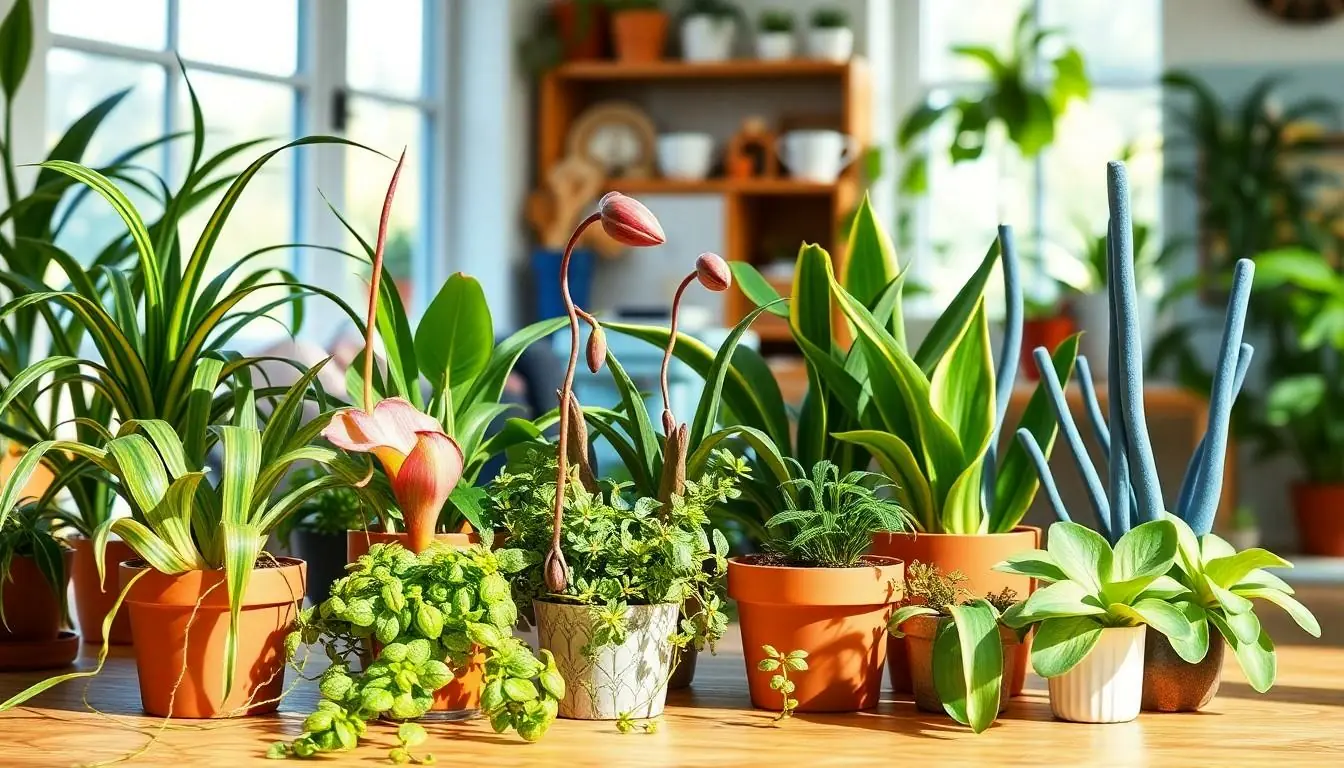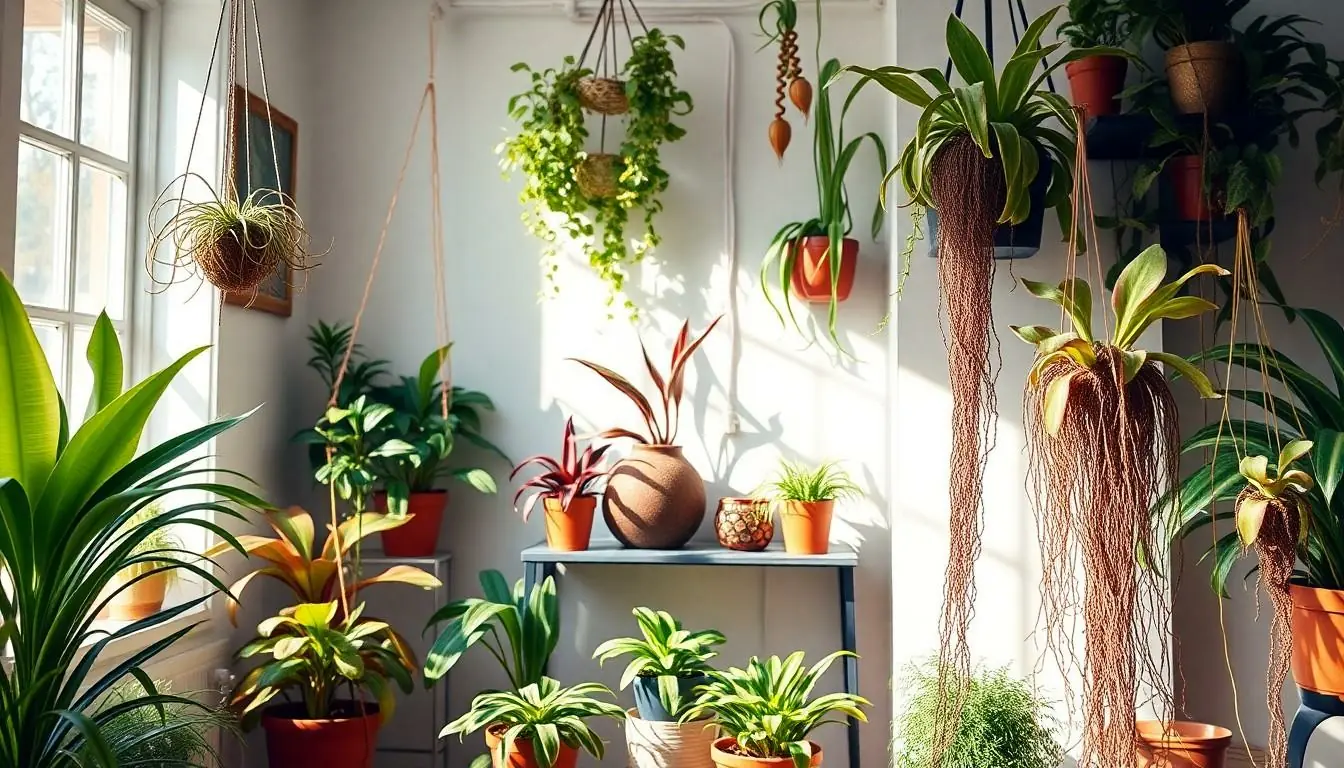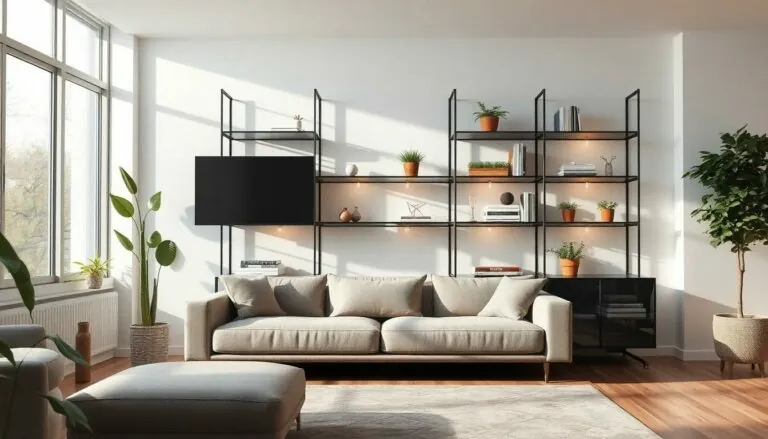When it comes to house plants, most people stick to the classics: succulents, snake plants, and the ever-popular pothos. But what if they could spice up their indoor jungle with something a bit more… unconventional? Enter the world of unusual house plants, where the weird and wonderful reign supreme. From plants that look like they belong in a sci-fi movie to those that can give a cactus a run for its money, these botanical oddities are sure to make any space feel like a quirky oasis.
Table of Contents
ToggleUnusual House Plants Overview
Unusual house plants stand out through their distinct visual appeal and unique features. These intriguing species go beyond traditional favorites to capture the imagination and thrive in various indoor environments.
Definition and Characteristics
Unusual house plants often possess eye-catching traits such as unusual leaf shapes, striking colors, or fascinating growth habits. Examples include the Rhipsalis with its string-like branches and the Air Plant known for its intriguing, soil-free growth. Many of these plants thrive in diverse conditions, making them suitable for varying lighting and humidity levels. This adaptability allows plant enthusiasts to enjoy a unique collection without extensive care requirements.
Benefits of Unusual House Plants
Unusual house plants enhance indoor air quality by filtering toxins and producing oxygen. Studies show that specific species can improve mood and creativity, contributing to a calming atmosphere. Their distinct aesthetics add character to any space, serving as conversation starters and focal points in home design. Additionally, caring for these unique plants provides a fulfilling hobby that promotes mindfulness and relaxation. The variety available ensures that everyone finds a plant that resonates with their personal style.
Popular Unusual House Plants

Unusual house plants attract attention for their distinctive qualities. These unique options bring charm and character to indoor spaces.
Air Plants
Air plants, or Tillandsia, thrive without soil. They absorb moisture and nutrients through their leaves, requiring minimal care. Placing them in bright, indirect light promotes healthy growth. Mist them regularly or soak them in water for around 20 to 30 minutes weekly. Their unique appearance adds a whimsical touch to any room.
Venus Flytrap
The Venus flytrap, known scientifically as Dionaea muscipula, offers a captivating look with its jaw-like leaves. This carnivorous plant catches insects using its specialized traps, making it both fascinating and functional. These plants require bright light and high humidity for optimal growth. Regular feeding with insects enhances their health. A Venus flytrap serves as a stunning focal point in any collection.
String of Dolphins
String of dolphins, scientifically recognized as Senecio peregrinus, presents trailing vines shaped like tiny dolphins. This succulent thrives in bright, indirect sunlight, making it perfect for shelves or hanging baskets. Let the soil dry out between waterings to maintain its health. Unique foliage captivates plant lovers and sparks conversations. It complements any indoor plant display beautifully.
Blue Chalksticks
Blue chalksticks, or Senecio serpens, stand out with their chalky blue leaves. This succulent shines bright under direct sunlight while tolerating poor soil conditions. Regular watering during the growing season encourages vibrant growth. Its compact size fits well in various settings, offering versatility. Blue chalksticks’ striking color enhances any plant arrangement.
Care and Maintenance Tips
Maintaining unusual house plants involves understanding their specific needs. Proper care ensures these unique botanicals thrive and enhance indoor spaces.
Watering Requirements
Watering frequency varies among unusual house plants. Air plants thrive with light misting every few days. In contrast, Venus flytraps prefer consistently moist soil without becoming waterlogged. String of Dolphins requires watering only when the top inch of soil dries out. Blue Chalksticks benefit from infrequent watering, typically every two to three weeks. Observing the plants’ leaves helps identify underwatering or overwatering. A general rule emphasizes ensuring proper drainage to prevent root rot.
Light Conditions
Light preferences differ significantly among these plants. Air plants excel in bright, indirect light but tolerate lower light levels. Venus flytraps need direct sunlight, thriving in six hours of sun daily. String of Dolphins performs well in bright light but can adapt to partial shade. Blue Chalksticks flourish in full sunlight, producing vibrant color when exposed to adequate brightness. Assessing the specific light requirements for each plant promotes healthy growth and striking aesthetics.
Soil and Fertilization
Soil type plays a crucial role in the health of unusual plants. Air plants grow in well-draining, aerated media that allows airflow. Venus flytraps thrive in a peat-based mix with high acidity. String of Dolphins prefer a cactus mix that provides proper drainage and nutrients. Blue Chalksticks require gritty, well-draining soil that holds little moisture. Fertilizing can enhance their growth; a diluted liquid fertilizer used during the growing season supports vitality. Monitoring soil conditions helps maintain plant health over time.
Decorating with Unusual House Plants
Unusual house plants bring character and charm to any indoor space. Their unique traits enrich home decor and create a distinctive oasis.
Indoor Aesthetics
Distinct aesthetics define unusual house plants. The striking shapes and vibrant colors instantly attract attention. An Air Plant’s whimsical forms or the Venus flytrap’s jaw-like leaves can serve as focal points in any room. When arranged thoughtfully, these plants foster an inviting atmosphere. Pairing a Blue Chalkstick’s chalky blue leaves with a contrasting background amplifies visual appeal. Incorporating these botanical oddities showcases individual style while driving curiosity among guests.
Combining with Traditional Plants
Traditionally favored plants enhance the beauty of unusual varieties. A thriving snake plant complements a cascading String of Dolphins, creating layers within a display. Unique textures and colors from unusual plants add depth and interest alongside classic choices. By mixing unusual and traditional varieties, homeowners can create dynamic arrangements that breathe life into their spaces. Balancing form and function, these combinations also improve air quality while elevating design aesthetics. Adding a few unusual plants to existing arrangements can transform any plant collection from ordinary to extraordinary.
Embracing unusual house plants can truly transform indoor spaces into vibrant, distinctive oases. Their unique features and captivating aesthetics not only enhance home decor but also contribute to a healthier living environment. By incorporating these botanical curiosities into their collections, plant enthusiasts can express personal style while enjoying the benefits of improved air quality and a calming atmosphere.
Caring for these plants fosters a fulfilling hobby that encourages mindfulness and relaxation. With a little attention to their specific needs, anyone can cultivate a stunning array of unusual house plants that spark joy and curiosity. Whether it’s the whimsical Air Plant or the striking Venus flytrap, these plants add character and charm that make any home feel more inviting.





